On many Irish farms, a chainsaw is a tool that is not used regularly and therefore the correct maintenance procedure can suffer or in some cases go long overdue.Within this guide, we outline a number of pointers and areas worth addressing before the saw is called up to duty this winter.
Air and fuel filter
During storage for prolonged periods of time, the fuel tank should be empty. It is not uncommon for constituents of the two-stroke fuel mix ingredients to evaporate and leave behind a jelly-like residue. If this occurs, then it may clog up the carburettor. In most cases, carburettor cleaner will resolve the issue, but the worst-case scenario is replacement.
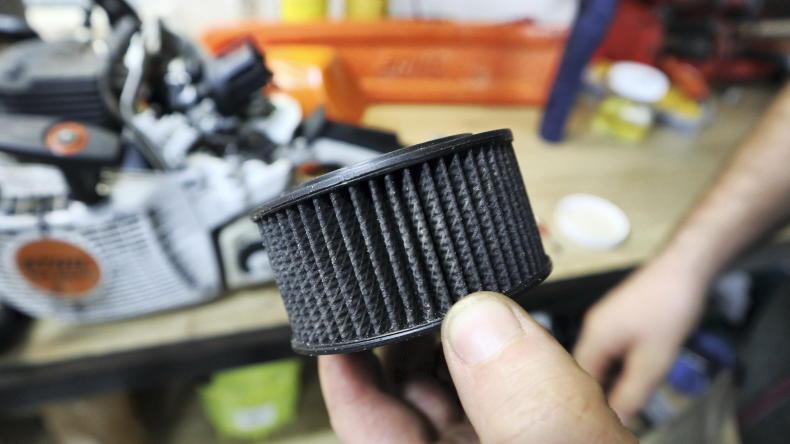
The air filter should be blown out regularly and replaced at every service.
Every service should see both the fuel and air filters replaced. For most, a fuel filter typically costs only €5 or €6. Between services and depending on cutting conditions, the air filter should be regularly blown out to remove the larger dust particles.
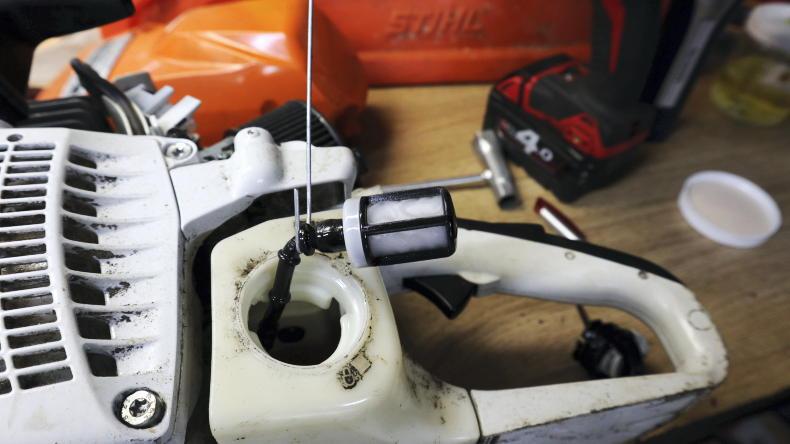
The fuel filter is located within the tank.
Air filters will generally cost no more than €15. A blocked air filter will result in restricted power as the engine is receiving too much fuel and not enough air. This will smother the engine and cause it to run inefficiently or stall.
Spark plug
The spark plug should be replaced at every service. A worn-out spark plug will leave the chainsaw hard to start or fail to start in the worst scenario.
A spark plug will only cost around €5. By examining the condition of the old spark plug it can tell a lot about how the engine is running. If the porcelain insulator is cracked, an electrode may be damaged or burnt.
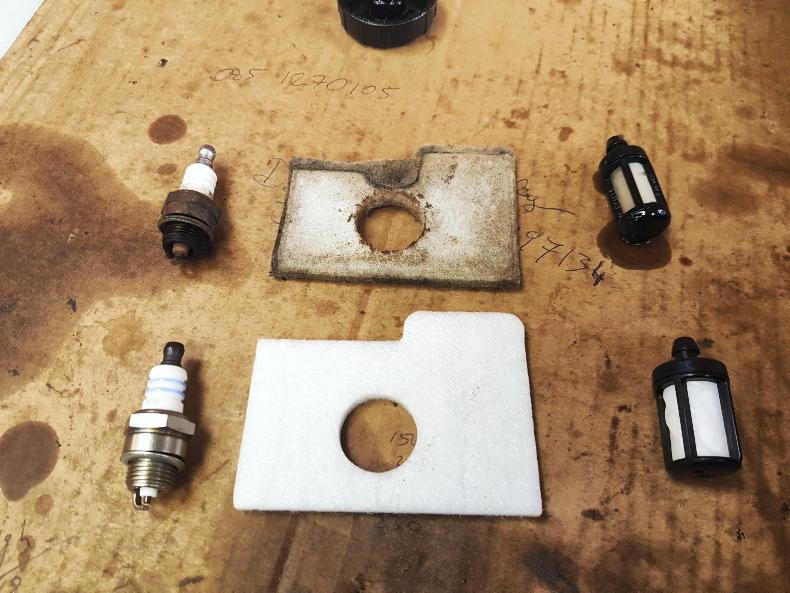
Spark plugs and fuel filters should be replaced at every major service.
A worn spark plug is a good indication of potential underlying issues. A grey colouring may indicate piston damage. The grey colouration is a result of aluminium burning within the cylinder.
Guide bar and chain brake
The guide bar, unknown to many is a wearing part and often a component overlooked. The track on which the chain runs needs to be kept clean for proper lubrication to take place. There is a bearing and sprocket at the top of each guide bar on which the chain rotates. This bearing should receive grease via the small hole on the side of the bar regularly.
If the chain channel has widened enough that the chain has become loose, then it will need to be replaced or turned upside down. The top side will naturally wear more, so when wear just about becomes visible, turn it upside down to get that bit extra use out of it before replacement.
The chain brake is a vital safety feature on any chainsaw. It needs to be functional. It is simply a steel band around the saw’s clutch drum.
Once activated, the band tightens on the clutch drum and stops the chain immediately. It is good practice to apply the brake every time the saw is left down, during sharpening or not in use. A saw with no chain brake should not be used.
Chain
Chain sharpening is a skill worth perfecting. When you find yourself leaning on the chainsaw to make it cut, it’s a sure indication that the chain needs sharpened.
Not only does this take longer, it uses more fuel and, over a prolonged period, will lead to chain damage in addition to premature bar and sprocket wear. A chain can instantly lose its edge if contact with clay or a stone is made.
Regardless of the sharpening method, each cutting tooth on the chain will have a diagonal line, usually called a witness mark. This indicates the sharpening angle and marks the end of the life of the chain when filed to this point.
Chains can be sharpened manually using a file or using an electric sharpener. An electric sharpener requires the chain to be removed from the guide bar.
A simple round file is the most basic option. However, there is a two-in-one tool available that sharpens both the cutters and depth gauge (rakers) simultaneously. The benefit of a file is that it eliminates the need to return to the yard for sharpening and when familiar with the process, it can be as quick as removing the chain for use with an electric sharpener.
It is important to identify the chain size, which in turn determines the size of the file needed – it’s not a one-size-fits-all scenario. A chain that has been sharpened unevenly or at the incorrect angle will not cut straight.

The two-in-one sharpening tool or file should always be held level and used at the correct angle.
To sharpen, the file/two-in-one tool should be held level and at the correct angle. It then needs to be drawn from the inside of the cutter to the outside of the cutter.
Start by sharpening all the cutters on one side of the chain, then file the cutters on the opposite side. It should be relatively easy to see where you started, as the sharpened cutters tend to be shiny with traces of filings.
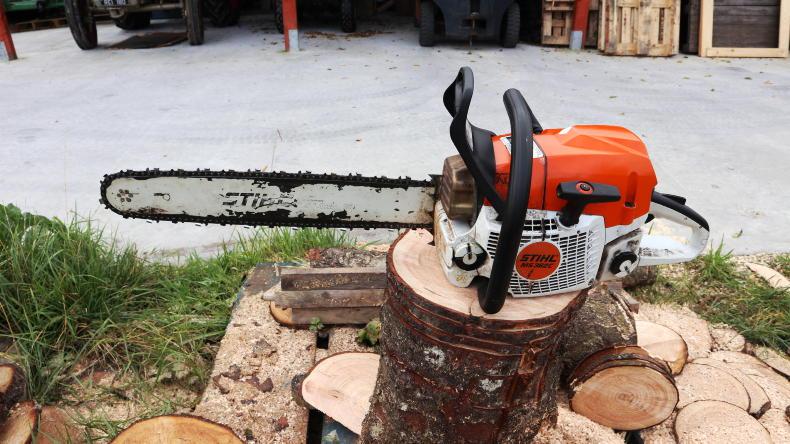
A chainsaw with a sharp chain should cut freely through timber without any persuasion.
For the purposes of an even cut and even wear, each cutter should receive the same number of strokes with the file. As a chain is sharpened, its depth gauges need to be lowered.
The two-in-one tool does this automatically, but those using a standard round file will need to follow with a flat file and lower the rakers separately. Too low and the saw will be biting too much into the timber, causing it to jump, and if too high, the chainsaw will be unable to cut. If in doubt, it may be worthwhile having the chain professionally sharpened.
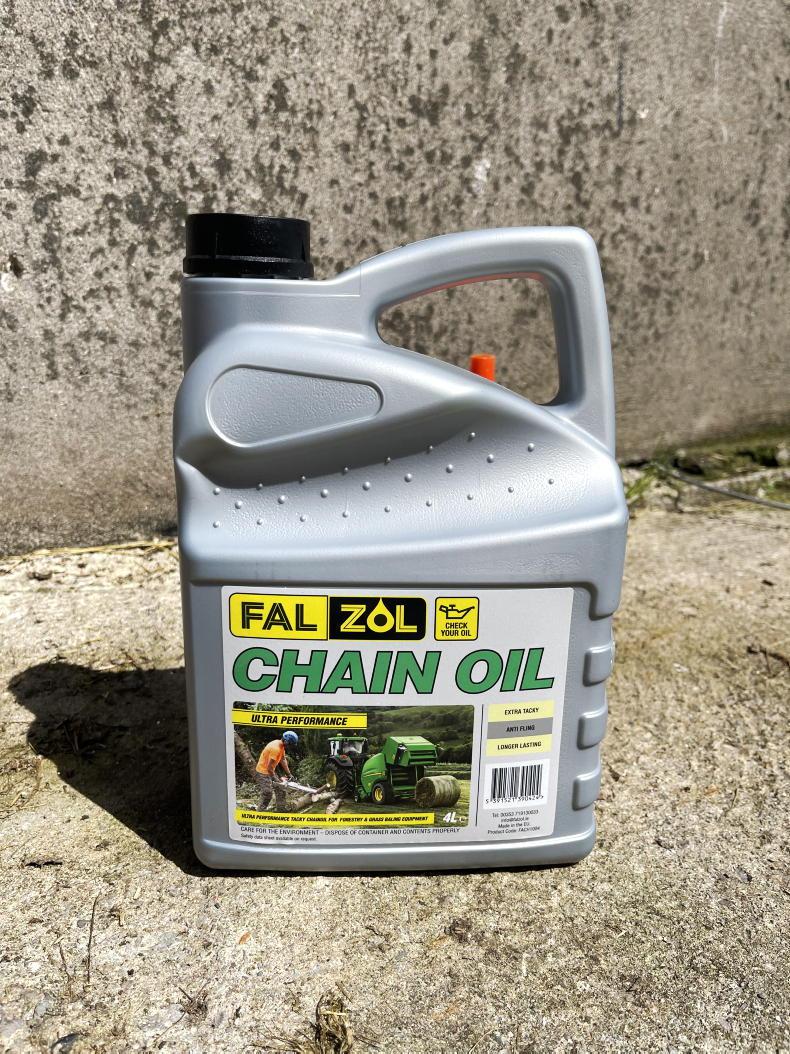
Dedicated chain oil has the required cling properties in order to keep it on the chain during use where most other oils would be flung of the chain instantly.
Chain tension is also important – too tight and it will not move freely on the guide bar; too loose and it has the possibility of coming off the bar. It should be tightened to the point that it is just resting against the bottom side of the guide bar.
Run the saw for a few minutes and recheck the tension and adjust if necessary.
The two-in-one sharpening tool or file should always be held level and used at the correct angle.
A general rule of thumb is that for every tank of two-stroke fuel used, a tank of chain oil should be used too. It is vital that proper chain oil is used and not waste oil or even fresh engine or hydraulic oil.
Burnt oil has a high sulphur content and, most importantly, reduces lubrication qualities.
Dedicated chain oil has the required cling properties in order to keep it on the chain during use where most other oils would be flung of the chain instantly.
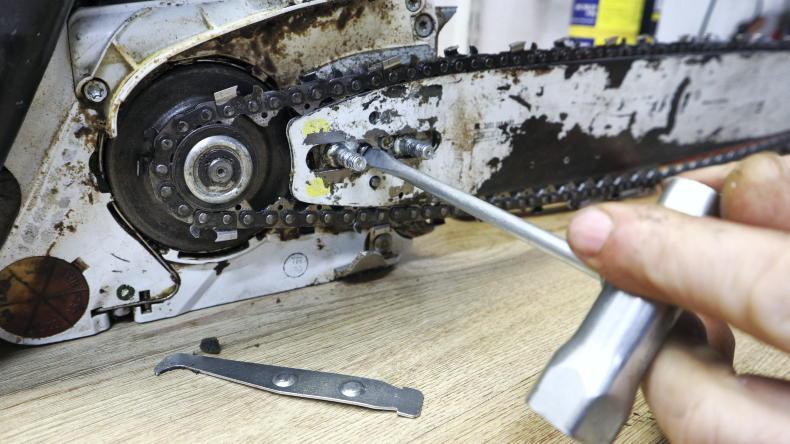
The chain should be correctly tensioned but not over tensioned.
While on the topic of oil, it is important that a quality brand of two-stroke oil is used and mixed with the petrol at the manufacturers stated ratio.
Last but not least, it is important that all guards are intact and the correct personal protective equipment (PPE) is worn at all times when the chainsaw is in operation, regardless of the task size.
This includes safety helmet with faceguard, ear defenders, safety steel-toe boots, gloves and chainsaw trousers.
A branded set including a helmet with face shield and ear defenders, protective trousers and gloves will cost between €170 and €200.
Over a number of years, this is a low cost and worthwhile investment. 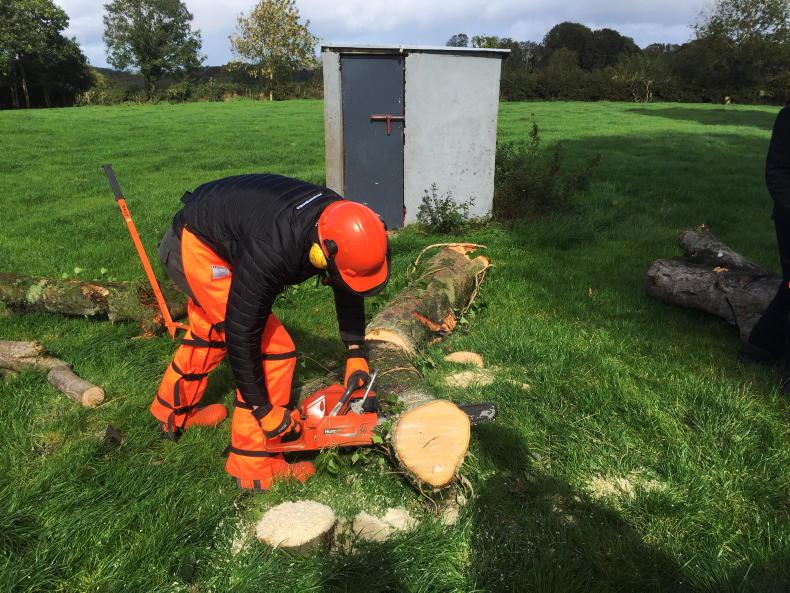
It is well worth investing in the correct PPE which includes trousers, gloves and a helmet with a face shield and ear defenders.
On many Irish farms, a chainsaw is a tool that is not used regularly and therefore the correct maintenance procedure can suffer or in some cases go long overdue.Within this guide, we outline a number of pointers and areas worth addressing before the saw is called up to duty this winter.
Air and fuel filter
During storage for prolonged periods of time, the fuel tank should be empty. It is not uncommon for constituents of the two-stroke fuel mix ingredients to evaporate and leave behind a jelly-like residue. If this occurs, then it may clog up the carburettor. In most cases, carburettor cleaner will resolve the issue, but the worst-case scenario is replacement.

The air filter should be blown out regularly and replaced at every service.
Every service should see both the fuel and air filters replaced. For most, a fuel filter typically costs only €5 or €6. Between services and depending on cutting conditions, the air filter should be regularly blown out to remove the larger dust particles.

The fuel filter is located within the tank.
Air filters will generally cost no more than €15. A blocked air filter will result in restricted power as the engine is receiving too much fuel and not enough air. This will smother the engine and cause it to run inefficiently or stall.
Spark plug
The spark plug should be replaced at every service. A worn-out spark plug will leave the chainsaw hard to start or fail to start in the worst scenario.
A spark plug will only cost around €5. By examining the condition of the old spark plug it can tell a lot about how the engine is running. If the porcelain insulator is cracked, an electrode may be damaged or burnt.

Spark plugs and fuel filters should be replaced at every major service.
A worn spark plug is a good indication of potential underlying issues. A grey colouring may indicate piston damage. The grey colouration is a result of aluminium burning within the cylinder.
Guide bar and chain brake
The guide bar, unknown to many is a wearing part and often a component overlooked. The track on which the chain runs needs to be kept clean for proper lubrication to take place. There is a bearing and sprocket at the top of each guide bar on which the chain rotates. This bearing should receive grease via the small hole on the side of the bar regularly.
If the chain channel has widened enough that the chain has become loose, then it will need to be replaced or turned upside down. The top side will naturally wear more, so when wear just about becomes visible, turn it upside down to get that bit extra use out of it before replacement.
The chain brake is a vital safety feature on any chainsaw. It needs to be functional. It is simply a steel band around the saw’s clutch drum.
Once activated, the band tightens on the clutch drum and stops the chain immediately. It is good practice to apply the brake every time the saw is left down, during sharpening or not in use. A saw with no chain brake should not be used.
Chain
Chain sharpening is a skill worth perfecting. When you find yourself leaning on the chainsaw to make it cut, it’s a sure indication that the chain needs sharpened.
Not only does this take longer, it uses more fuel and, over a prolonged period, will lead to chain damage in addition to premature bar and sprocket wear. A chain can instantly lose its edge if contact with clay or a stone is made.
Regardless of the sharpening method, each cutting tooth on the chain will have a diagonal line, usually called a witness mark. This indicates the sharpening angle and marks the end of the life of the chain when filed to this point.
Chains can be sharpened manually using a file or using an electric sharpener. An electric sharpener requires the chain to be removed from the guide bar.
A simple round file is the most basic option. However, there is a two-in-one tool available that sharpens both the cutters and depth gauge (rakers) simultaneously. The benefit of a file is that it eliminates the need to return to the yard for sharpening and when familiar with the process, it can be as quick as removing the chain for use with an electric sharpener.
It is important to identify the chain size, which in turn determines the size of the file needed – it’s not a one-size-fits-all scenario. A chain that has been sharpened unevenly or at the incorrect angle will not cut straight.

The two-in-one sharpening tool or file should always be held level and used at the correct angle.
To sharpen, the file/two-in-one tool should be held level and at the correct angle. It then needs to be drawn from the inside of the cutter to the outside of the cutter.
Start by sharpening all the cutters on one side of the chain, then file the cutters on the opposite side. It should be relatively easy to see where you started, as the sharpened cutters tend to be shiny with traces of filings.

A chainsaw with a sharp chain should cut freely through timber without any persuasion.
For the purposes of an even cut and even wear, each cutter should receive the same number of strokes with the file. As a chain is sharpened, its depth gauges need to be lowered.
The two-in-one tool does this automatically, but those using a standard round file will need to follow with a flat file and lower the rakers separately. Too low and the saw will be biting too much into the timber, causing it to jump, and if too high, the chainsaw will be unable to cut. If in doubt, it may be worthwhile having the chain professionally sharpened.

Dedicated chain oil has the required cling properties in order to keep it on the chain during use where most other oils would be flung of the chain instantly.
Chain tension is also important – too tight and it will not move freely on the guide bar; too loose and it has the possibility of coming off the bar. It should be tightened to the point that it is just resting against the bottom side of the guide bar.
Run the saw for a few minutes and recheck the tension and adjust if necessary.
The two-in-one sharpening tool or file should always be held level and used at the correct angle.
A general rule of thumb is that for every tank of two-stroke fuel used, a tank of chain oil should be used too. It is vital that proper chain oil is used and not waste oil or even fresh engine or hydraulic oil.
Burnt oil has a high sulphur content and, most importantly, reduces lubrication qualities.
Dedicated chain oil has the required cling properties in order to keep it on the chain during use where most other oils would be flung of the chain instantly.

The chain should be correctly tensioned but not over tensioned.
While on the topic of oil, it is important that a quality brand of two-stroke oil is used and mixed with the petrol at the manufacturers stated ratio.
Last but not least, it is important that all guards are intact and the correct personal protective equipment (PPE) is worn at all times when the chainsaw is in operation, regardless of the task size.
This includes safety helmet with faceguard, ear defenders, safety steel-toe boots, gloves and chainsaw trousers.
A branded set including a helmet with face shield and ear defenders, protective trousers and gloves will cost between €170 and €200.
Over a number of years, this is a low cost and worthwhile investment. 
It is well worth investing in the correct PPE which includes trousers, gloves and a helmet with a face shield and ear defenders.













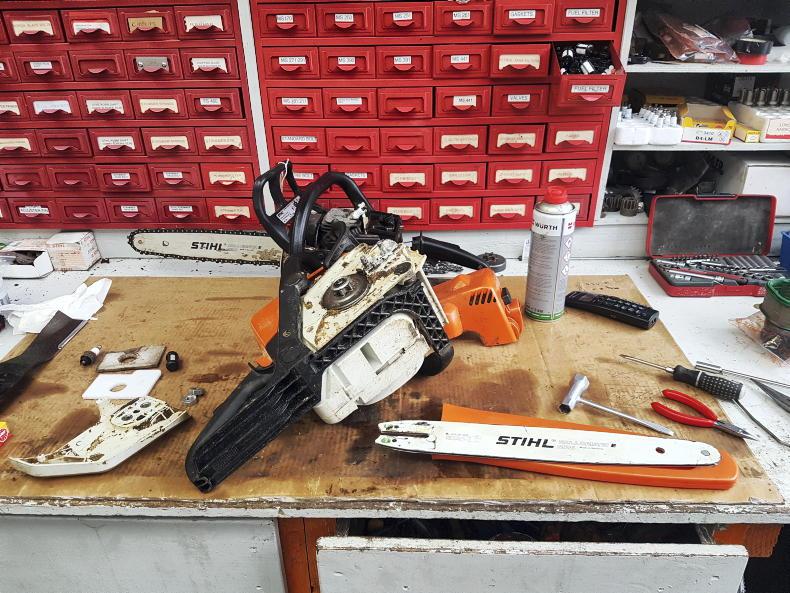
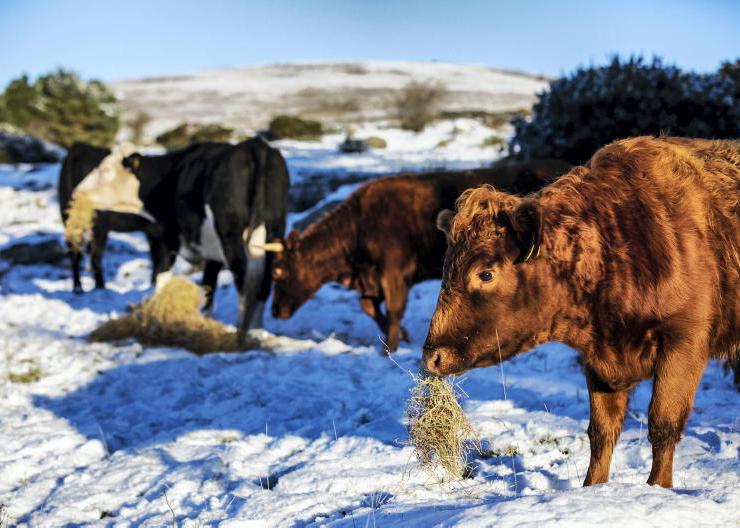

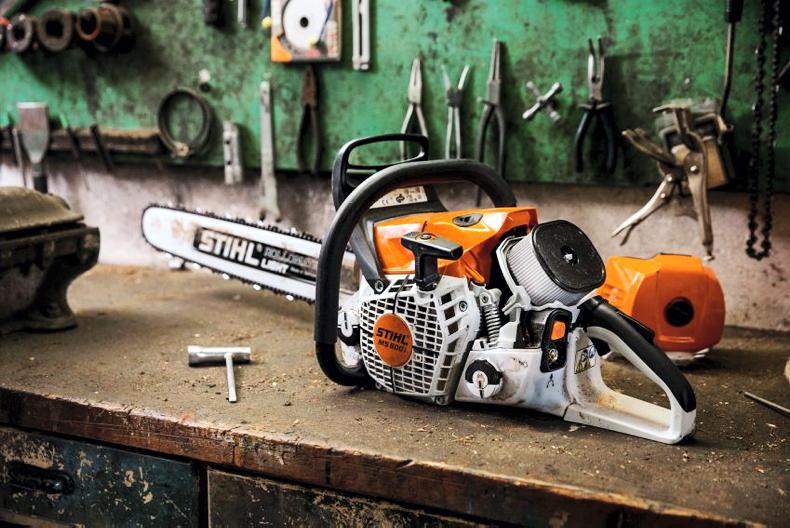
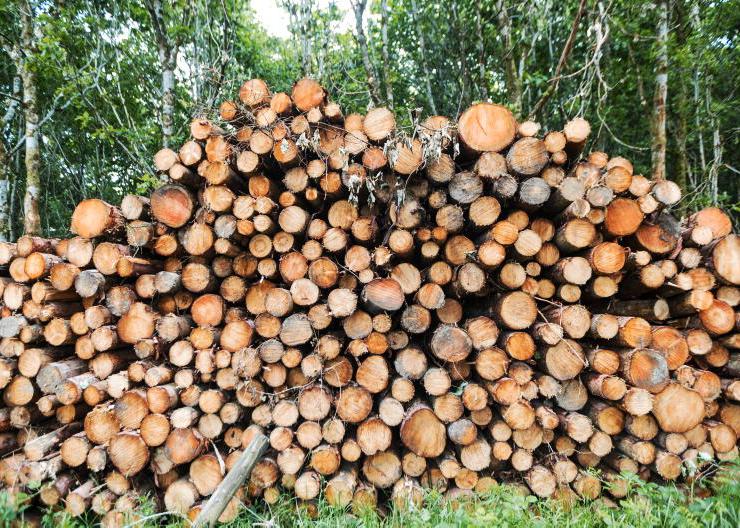
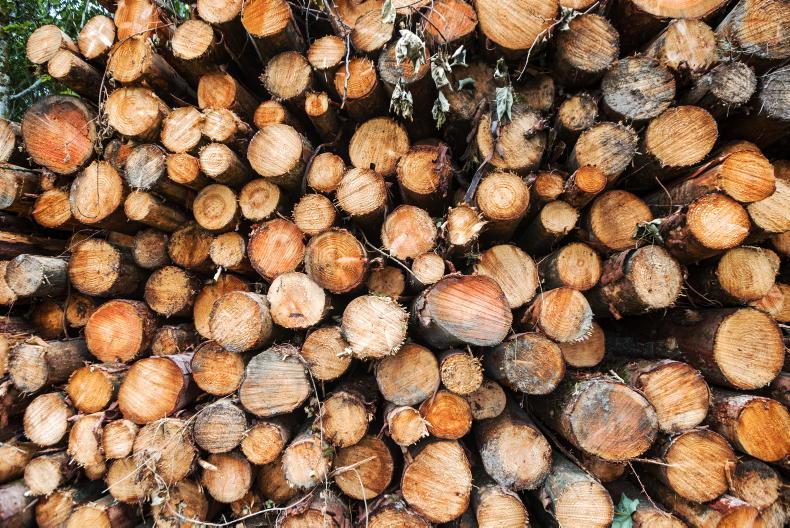
SHARING OPTIONS